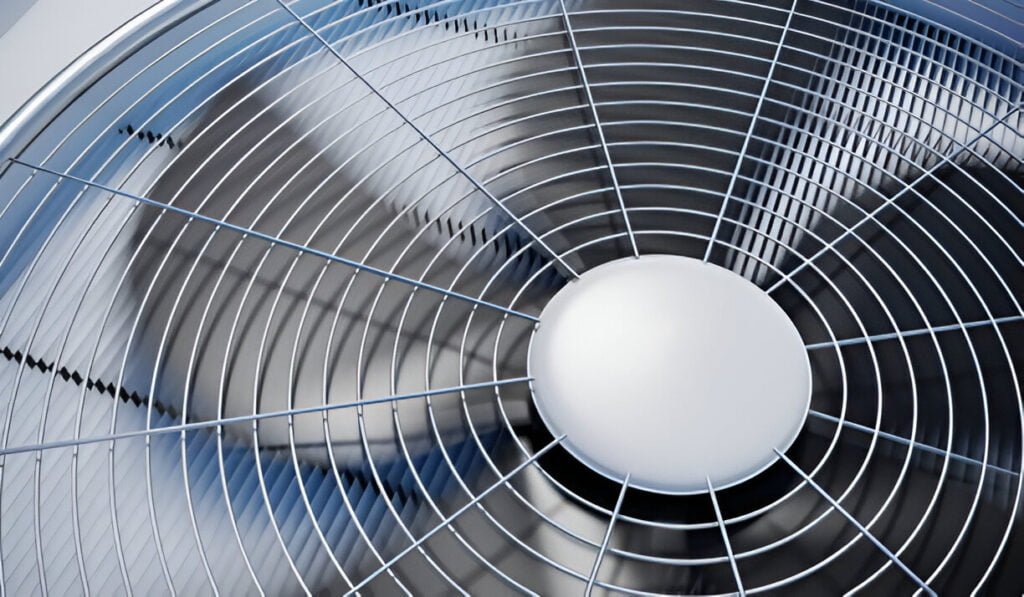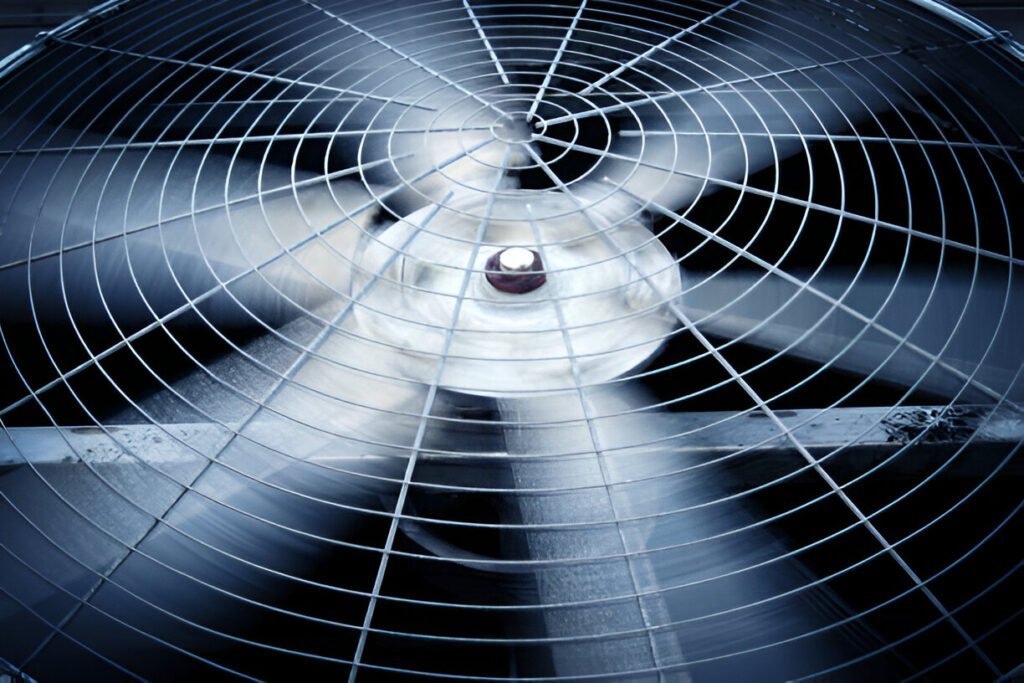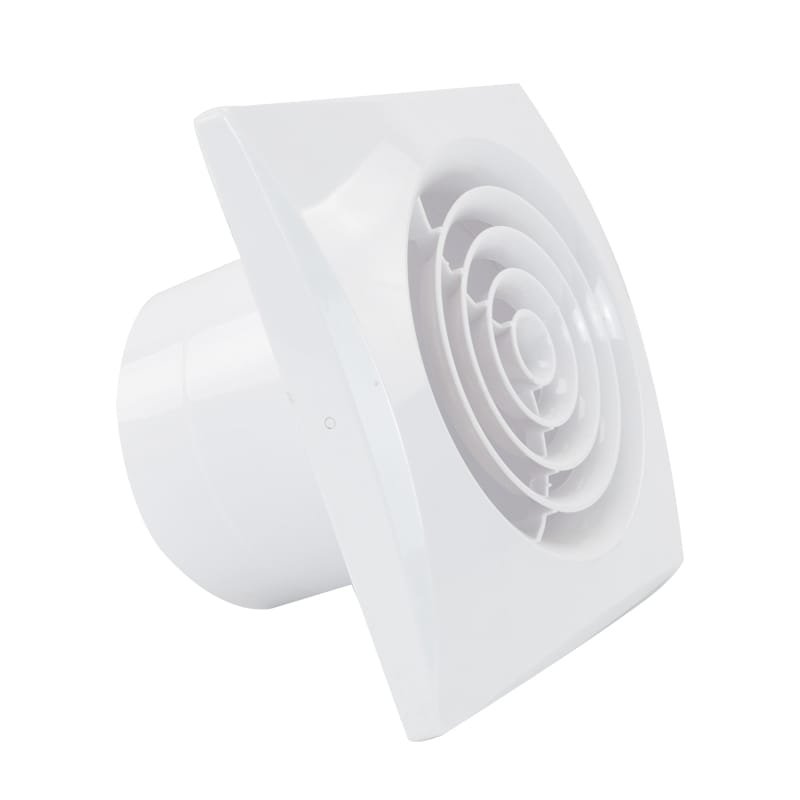Axial Fans Vs Air Movers: What Is the Differences
Axial fans and air movers differ in airflow direction and application. Axial fans move air linearly, while air movers provide high-volume airflow.
Read More
AC fans and DC fans differ primarily in their power source and operational characteristics. AC fans run on alternating current from standard outlets, while DC fans use direct current. The main differences include energy efficiency, noise levels, speed control, and applications.
A100 AC/DC variable frequency brushless window sash copper core motor is safe and stable AC fans operate using alternating current power directly from standard household outlets. They work with 120V AC power supplies commonly found in homes and businesses.
When plugged in, an AC fan uses an AC motor to convert electrical energy into mechanical energy. The motor consists of a stator and a rotor. Alternating current flowing through the motor’s windings creates a rotating magnetic field, causing the rotor to spin.
AC fans operate through a combination of electrical and mechanical components. The core elements include a motor, blades, and housing. The motor receives alternating current directly from the home’s electrical supply.
Electricity flows through the motor’s windings when the fan is activated. This creates a rotating magnetic field that interacts with the rotor, causing it to spin. The rotor connects to a shaft, which rotates the fan blades.
Induction motors power most AC fans. These motors consist of two main parts: the stator and the rotor. The stator, the stationary outer part, contains electromagnets that generate the rotating magnetic field. The rotor, the rotating inner part, features conductive bars that respond to this field.


AC fans often come with lower price tags compared to DC fans.
AC fans now offer 3 control options, enhancing user convenience and customization.
AC fans deliver steady and continuous airflow. They maintain constant speed without fluctuations, ensuring consistent performance.
These fans excel in larger areas, circulating air efficiently without power loss. They provide uninterrupted cooling and ventilation during extended use.
AC fans feature a simple installation process without extra components. Users can set up and operate these fans immediately upon unboxing. Connect the fan to a power source for instant functionality.
AC fans eliminate the need for voltage converters or specialized controllers. This plug-and-play design makes AC fans suitable for various applications.
AC motors typically run at constant speeds, limiting airflow adjustment capabilities. Modifying fan speed requires additional equipment such as voltage regulators or multi-tap transformers.
AC fans consume more energy than DC fans. This higher energy consumption appears on electricity bills, particularly for frequent fan users. AC fans typically operate at a fixed speed, drawing more power even when maximum airflow is unnecessary.
AC fans generate higher levels of electromagnetic interference (EMI) compared to DC fans. This increased EMI can disrupt nearby electronic devices, causing potential issues in sensitive environments.
The higher EMI in AC fans stems from their alternating current operation. As the current changes direction multiple times per second, it creates fluctuating electromagnetic fields. These fields can induce unwanted currents in nearby electronic circuits, leading to signal distortion or equipment malfunction.


Offer industrial AC fan customization services and free technical guidance. Contact us immediately to help you enhance the ventilation efficiency of your factory!
DC fans operate using direct current power, distinguishing them from AC fans that use alternating current from standard wall outlets. These electric fans work with batteries or DC power sources, making them suitable for portable and off-grid applications.
DC fans use direct current electricity to power a motor that rotates fan blades. The motor contains permanent magnets and an electromagnet called a rotor.
Electricity flowing through the rotor creates a magnetic field, interacting with permanent magnets to spin the rotor. This spinning motion transfers to the fan blades, generating airflow.
DC fans consume up to 70% less power than AC fans. This reduction in energy usage translates to lower electricity bills for users. The efficiency of DC fans stems from their ability to convert power with minimal waste, reducing heat generation during operation.
DC fans produce minimal electromagnetic interference (EMI) compared to AC fans. This characteristic makes them suitable for sensitive electronic environments.
DC fans offer superior noise reduction compared to AC fans. Their smoother operation and lower rotational speeds result in decreased noise output.
DC fans typically operate at 12V or 24V, lower than AC counterparts. Integration into various systems becomes easier with lower voltage requirements.
DC fans offer robust waterproof capabilities, making them suitable for applications with moisture exposure. Their sealed construction prevents water ingress, protecting internal components from damage.
DC fans offer a broader range of speed options compared to AC fans. These fans typically feature 3 to 7 or more speed settings.
DC fans offer variable airflow, a key advantage over AC fans’ fixed speeds. The stepless speed control allows fine-tuning of airflow for optimal cooling or energy efficiency.
DC fans offer a more compact design compared to AC fans. They are typically smaller and lighter, facilitating installation in confined spaces and reducing overall system weight. This space-saving characteristic does not compromise performance. DC fans deliver powerful airflow while occupying less room, making them suitable for applications with limited space.
AC to DC converters are necessary for operating DC fans in standard residential and commercial buildings. These buildings typically use AC power, creating a compatibility issue for DC fan systems. The converter transforms AC power into DC power, allowing the fan to function properly.
DC fans lack the ability to maintain a steady and continuous airflow direction. The airflow often changes speed and direction unpredictably, causing discomfort in certain environments. This inconsistency stems from the nature of direct current, which cannot sustain a constant flow like alternating current.
The variable airflow of DC fans results from fluctuations in the power supply and the motor’s response to these changes. As the voltage varies, the fan’s speed and direction adjust accordingly, leading to inconsistent air movement.
AC and DC fans have distinct construction differences. AC fans use a simpler design with a stator and rotor. The stator’s windings create a rotating magnetic field when powered, causing the rotor and attached blades to spin.
DC fans employ a more complex structure. They use brushless DC motors with permanent magnets and electronic commutation. These fans require controller boards and sensors to manage motor speed and direction.
DC fans surpass AC fans in energy efficiency. They consume less power while delivering equal or superior airflow. This stems from their capacity to operate at variable speeds without substantial energy loss.
DC fans offer superior speed control and performance compared to AC fans. DC motors allow precise speed adjustments through voltage regulation, providing more control over airflow and noise levels. Users can fine-tune DC fan speeds to match specific cooling needs, from gentle breezes to maximum airflow.
AC fans often have limited speed options, usually restricted to three or four preset speeds. This lack of flexibility can result in insufficient cooling or excessive airflow.
AC fans produce more noise because of alternating current. The motor vibrates at 50 or 60 Hz, causing a low hum. AC fans also create more air turbulence, resulting in increased whooshing sounds.
DC fans use brushless motors with less vibration and smoother rotation. This design leads to quieter operation across all speed settings.
AC fans typically last 5-10 years with proper maintenance. Their shorter lifespan results from brushes in AC motors wearing out over time, potentially requiring replacement.
DC fans often last 15-20 years or more. They lack brushes that wear out, contributing to their longevity. DC fans generate less heat during operation, reducing stress on motor components and extending overall life.
DC fans cost more upfront than AC fans due to additional components like electronic controllers and rectifiers. DC fans consume less energy, leading to lower electricity bills over time.
AC fans find widespread use in household appliances, industrial settings, and HVAC systems. These fans excel in applications requiring constant speed and high airflow, such as cooling large spaces or ventilating industrial facilities.
DC fans offer greater versatility and energy efficiency. They are commonly used in portable electronics, automotive cooling systems, and computer equipment. DC fans perform well in applications needing variable speed control or low power consumption, including laptops and solar-powered devices.
AC fans can be used with solar power systems through an inverter. However, DC fans are more efficient for solar setups, as they can operate directly from the DC power generated by solar panels without conversion.
DC fans operate at lower voltages, presenting fewer risks. AC fans require more caution due to higher voltage levels and potential shock hazards.
Converting AC fans to DC fans, or vice versa, is not feasible. These fans are designed for specific power sources and contain different internal components.
Check the fan’s label or specifications. AC fans typically have a voltage rating of 110V or 220V, while DC fans have lower voltages like 12V or 24V. AC fans also have a single set of wires, whereas DC fans have two sets: one for power and one for ground.
AC fans generally have higher power ratings and can move more air than DC fans of similar size. However, DC fans are more energy-efficient, quieter, and offer more precise speed control.
No, not all fans are DC. Fans can be powered by either DC (direct current) or AC (alternating current).